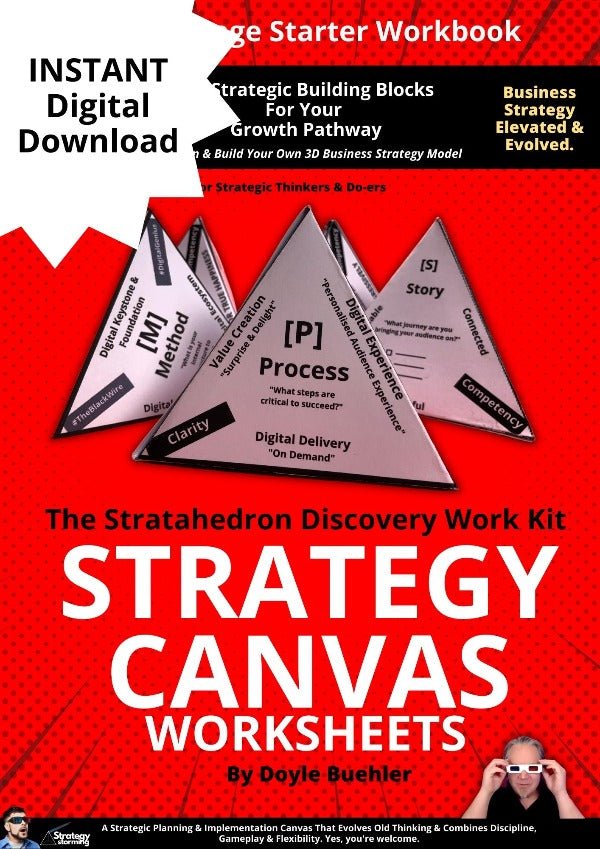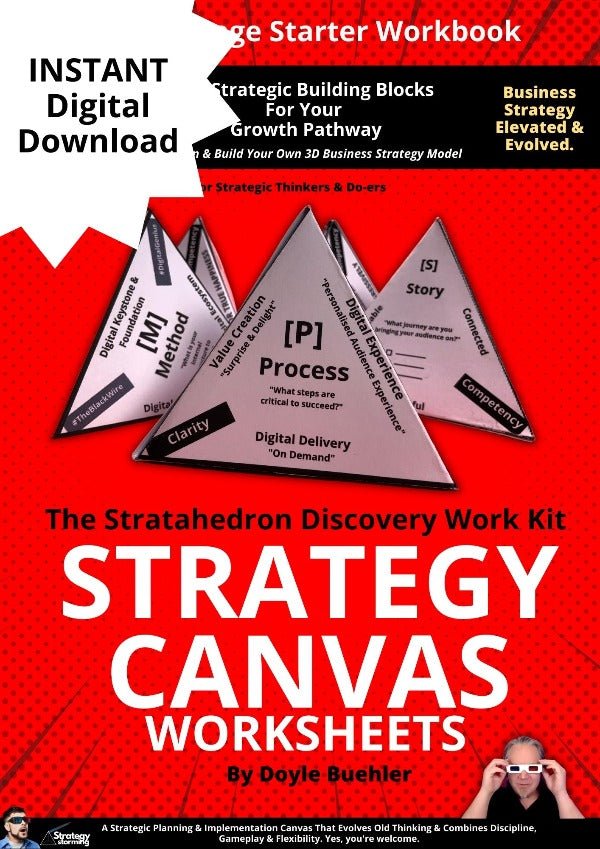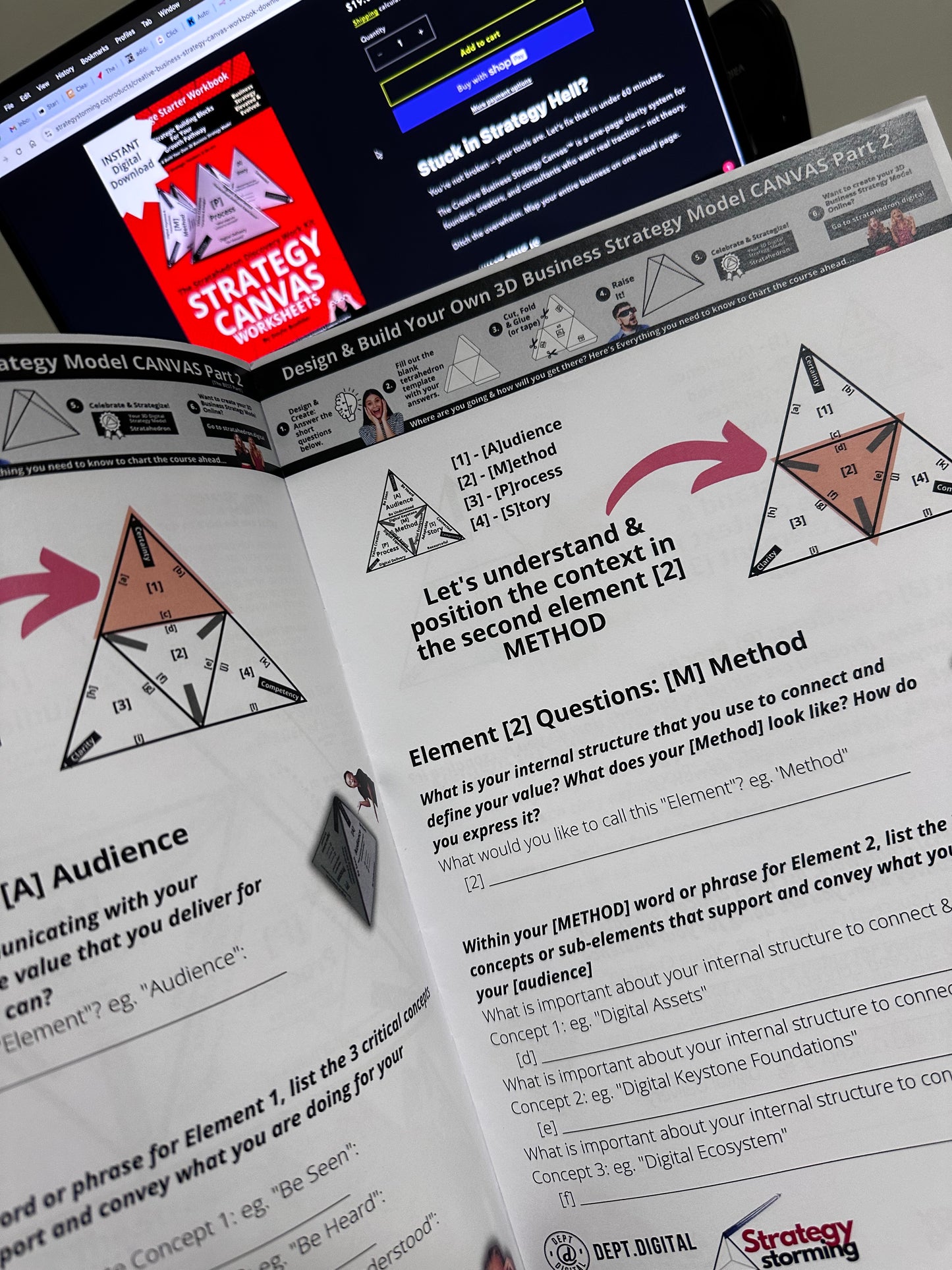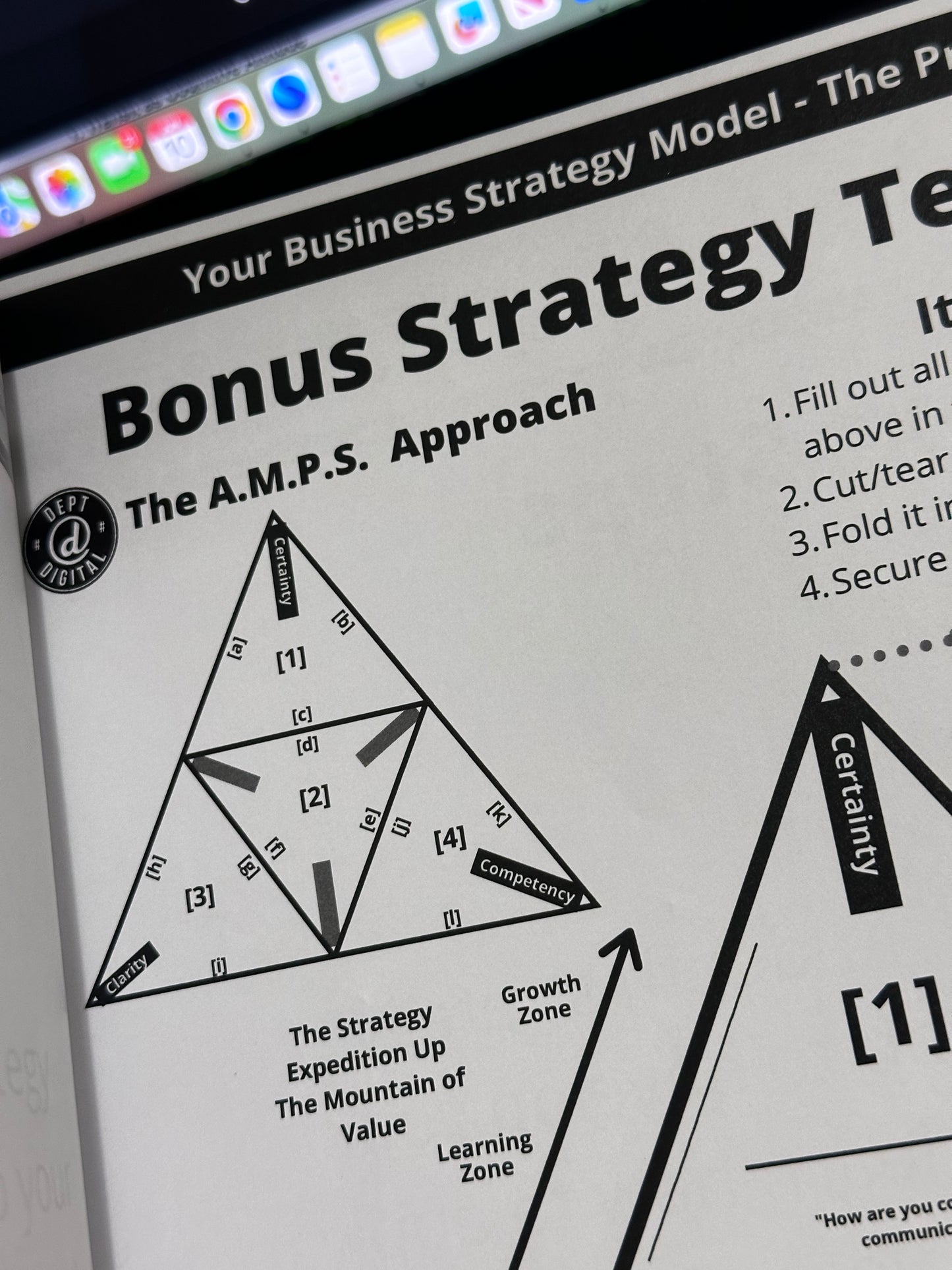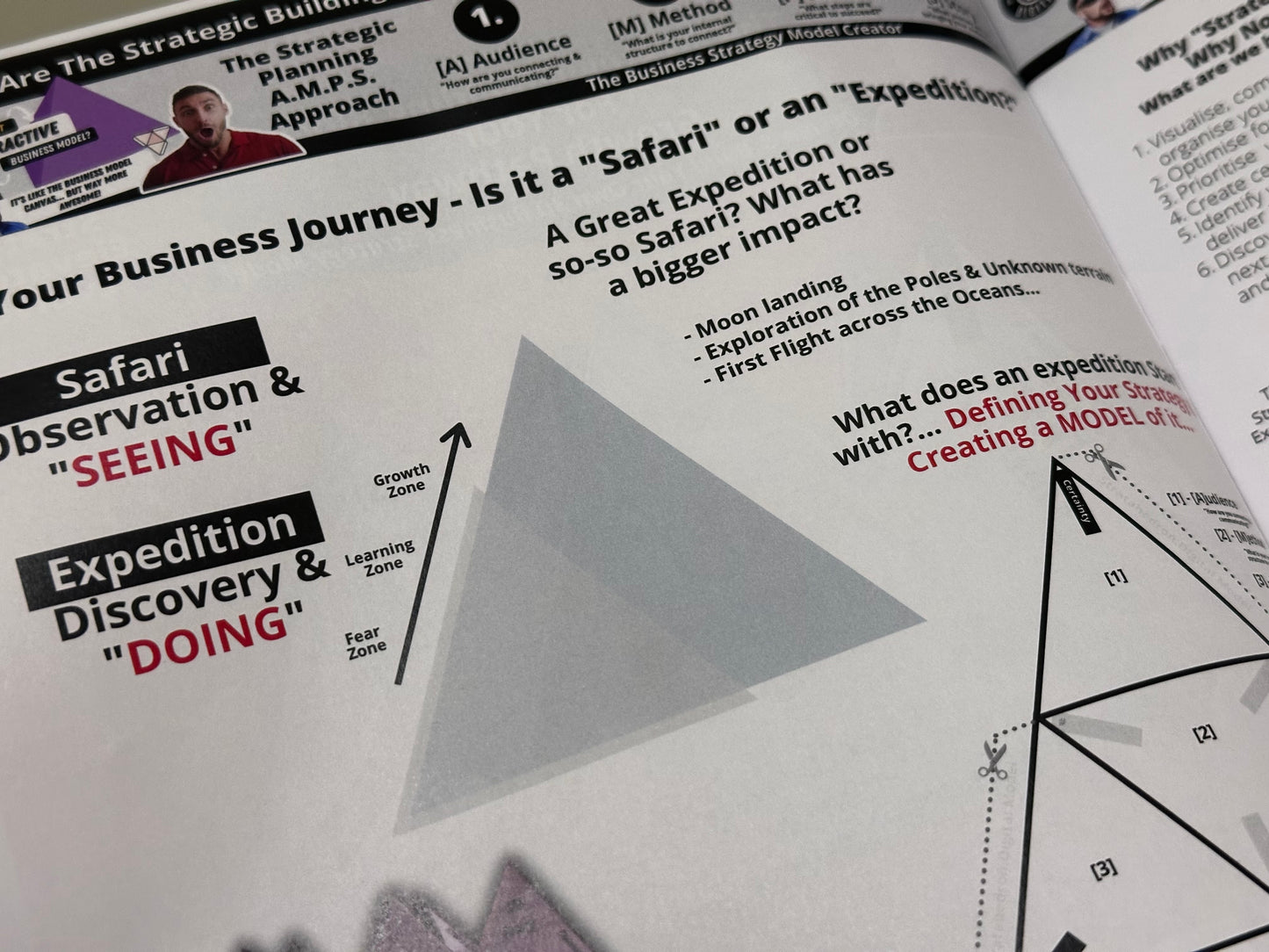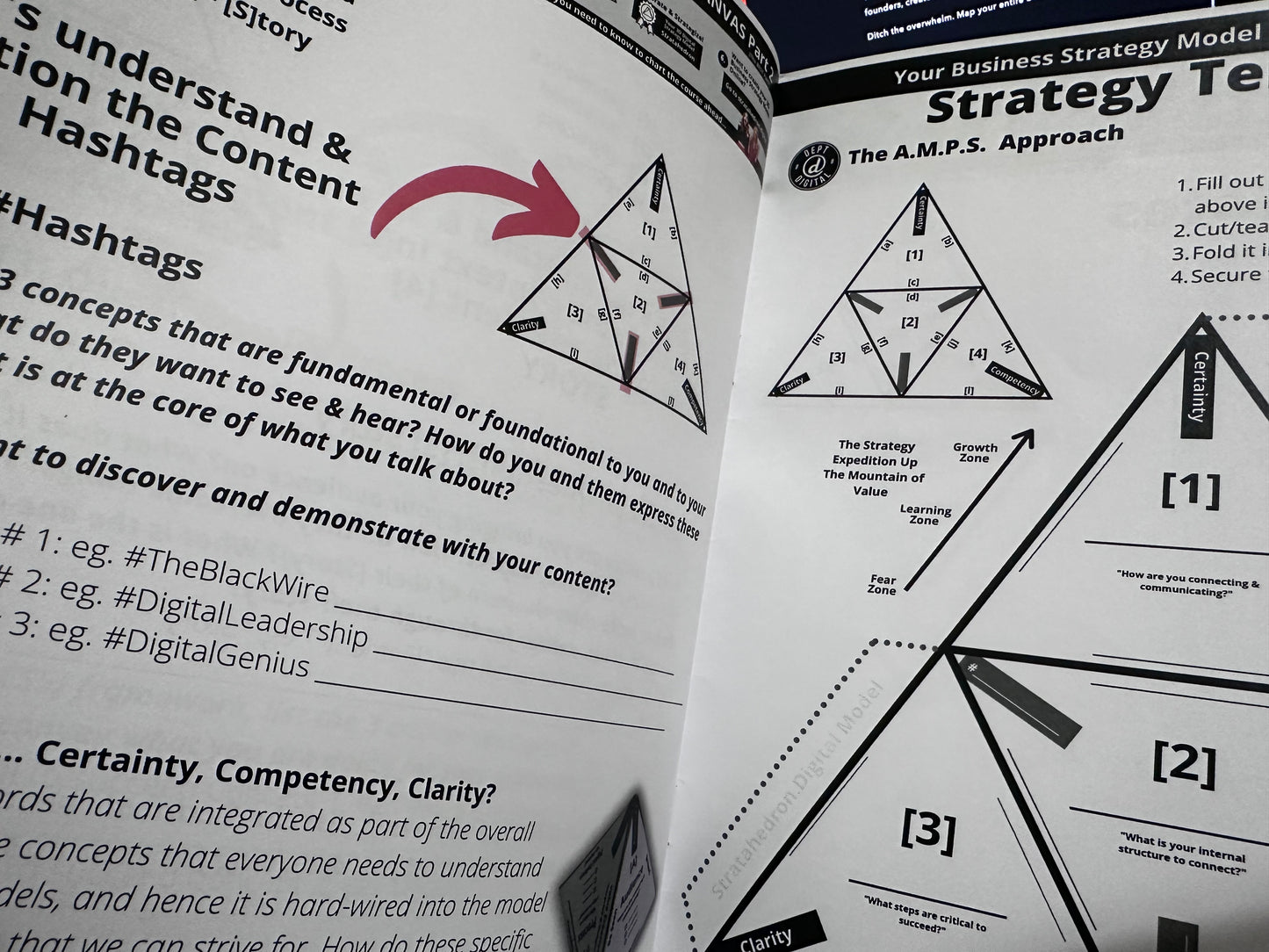
How to Use Strategy to Improve Revenue: A Comprehensive Guide
Share
Finding ways to improve revenue is essential for the long-term success of any organization, and is the height of strategy & strategic thinking
One of the most effective approach to achieve this is through strategic planning. Strategic planning is not just about making plans; it's about aligning your goals, understanding your market, and outsmarting the competition. In this comprehensive guide, we will explore the importance of strategic planning and how you can use it to boost your revenue.
Understanding the Importance of Strategic Planning
Before diving into the details, let's first define what strategic planning is all about. Strategic planning is the process of setting goals, making decisions, and allocating resources to achieve those goals. It involves analyzing your current situation, identifying opportunities and challenges, and developing a roadmap to success.
Now, you might wonder, what's the connection between strategy and revenue? Well, a solid strategy helps you to focus your efforts, make informed decisions, and allocate your resources effectively. By aligning your actions with your business objectives, you can maximize your revenue potential.

When it comes to strategic planning, it's essential to understand the various components that make up a successful strategy. One crucial aspect is conducting a thorough analysis of your current situation. This involves evaluating your strengths, weaknesses, opportunities, and threats (SWOT analysis). By understanding your internal capabilities and external market conditions, you can identify areas where you can leverage your strengths and mitigate potential risks.
Once you have a clear understanding of your current situation, the next step is to identify opportunities and challenges. This requires conducting market research, analyzing industry trends, and keeping an eye on your competitors. By staying informed about the market landscape, you can identify emerging opportunities and potential threats that may impact your business.
Developing a roadmap to success is another critical aspect of strategic planning. This involves setting clear and achievable goals that are aligned with your overall business objectives. Your goals should be specific, measurable, attainable, relevant, and time-bound (SMART). By setting SMART goals, you can track your progress and make adjustments along the way to ensure you stay on track.
Now that you have a solid strategy in place, it's time to allocate your resources effectively. This includes determining how to best utilize your financial, human, and technological resources to achieve your goals. By optimizing your resource allocation, you can maximize efficiency and minimize waste.
Strategic planning is not a one-time event but an ongoing process. It requires regular monitoring and evaluation to ensure that your strategy remains relevant and effective. By regularly reviewing your progress and making necessary adjustments, you can adapt to changing market conditions and stay ahead of the competition.
Strategic planning is a vital process for any business looking to achieve long-term success. By setting clear goals, analyzing your current situation, identifying opportunities and challenges, and developing a roadmap to success, you can maximize your revenue potential and stay ahead of the competition. Remember, strategic planning is an ongoing process, so make sure to regularly review and adjust your strategy to stay on track.
Key Elements of a Successful Business Strategy
Setting clear business objectives is the foundation of any successful strategy. Without clear objectives, it's like sailing without a destination in mind. Take the time to define specific, measurable, achievable, relevant, and time-bound (SMART) goals that will guide your strategic planning process.
One important aspect of setting clear business objectives is to ensure that they are aligned with your company's mission and vision. Your objectives should reflect the overall purpose and values of your organization. By doing so, you create a sense of direction and purpose for your team, which can lead to increased motivation and productivity.

Identifying your target market is equally important. Understanding who your customers are, their needs, and preferences will help you tailor your products or services more effectively. By targeting the right audience, you can maximize your revenue potential.
When identifying your target market, it's essential to conduct thorough market research. This involves gathering data on consumer behavior, market trends, and competitor analysis. By gaining a deep understanding of your target market, you can develop marketing strategies that resonate with your customers and differentiate your brand from competitors.
Of course, you can't forget about your competition. Analyzing your competitors and their strategies will not only help you identify gaps in the market but also allow you to differentiate yourself from the competition. This will give you a competitive edge and increase your chances of generating higher revenue.
Competitor analysis involves studying your competitors' strengths and weaknesses, their pricing strategies, marketing tactics, and customer satisfaction levels. By doing so, you can identify opportunities for improvement and develop strategies that position your business as a better alternative in the market.
Another crucial element of a successful business strategy is effective resource allocation. This involves determining how to allocate your company's resources, such as finances, human capital, and technology, to achieve your strategic objectives. By optimizing resource allocation, you can maximize efficiency and minimize waste, leading to improved profitability and sustainability.
Furthermore, a successful business strategy should also consider the ever-changing business landscape. This means staying updated on industry trends, technological advancements, and regulatory changes that may impact your business. By being proactive and adaptable, you can seize opportunities and mitigate potential risks.
A successful business strategy involves setting clear objectives, identifying your target market, analyzing your competition, effectively allocating resources, and staying updated on industry trends. By incorporating these key elements into your strategic planning process, you can position your business for long-term success and growth.
Developing Your Revenue Improvement Strategy
Once you have a clear understanding of the key elements of a successful business strategy, it's time to develop your revenue improvement strategy. This involves a series of steps that will guide you towards achieving your revenue goals.

One of the first steps is to conduct a thorough analysis of your current revenue streams and identify areas where you can make improvements. This could involve evaluating your pricing structure, exploring new markets, or introducing new products or services.
When evaluating your pricing structure, it's important to consider factors such as market demand, competition, and customer perception of value. By analyzing these factors, you can identify opportunities to adjust your pricing strategy and increase your revenue. For example, you may discover that your prices are lower than your competitors' prices, allowing you to raise them without losing customers.
Exploring new markets is another way to improve your revenue. Conducting market research can help you identify untapped customer segments or geographical areas where your products or services could be in high demand. By expanding your target market, you can increase your customer base and ultimately boost your revenue.
Introducing new products or services can also be a strategic move to improve your revenue. By diversifying your offerings, you can attract new customers and encourage existing customers to make additional purchases. However, it's important to carefully assess the market demand and potential profitability of new products or services before investing resources into their development and launch.
Another important aspect of strategy development is the use of tools and techniques. Whether it's SWOT analysis, market research, or financial modeling, utilizing the right tools can provide valuable insights and help you make informed decisions.
SWOT analysis, which stands for strengths, weaknesses, opportunities, and threats, can help you assess your business's internal strengths and weaknesses, as well as external opportunities and threats. By identifying these factors, you can develop strategies that leverage your strengths, address your weaknesses, capitalize on opportunities, and mitigate threats.
Grab your FREE SWOT Strategy Planner Worksheet & Tools Here
Market research is another powerful tool that can provide valuable insights into customer preferences, market trends, and competitor strategies. By understanding your target market and staying informed about industry developments, you can make data-driven decisions that drive revenue growth.
Financial modeling is yet another tool that can aid in strategy development. By creating financial models, you can simulate different scenarios and assess the potential impact on your revenue. This can help you make informed decisions about pricing, cost management, and investment opportunities.
Developing a revenue improvement strategy requires a thorough analysis of your current revenue streams, as well as the use of tools and techniques such as pricing evaluation, market exploration, and the utilization of tools like SWOT analysis, market research, and financial modeling. By taking these steps, you can identify opportunities for revenue growth and make informed decisions that will guide you towards achieving your revenue goals.
Implementing Your Strategy for Revenue Improvement
Developing a strategy is just the beginning; implementing it is where the real work happens. And to ensure successful implementation, leadership plays a crucial role. Leaders need to communicate the strategy effectively, align the organization's resources, and motivate their teams to achieve the desired outcomes.
Monitoring and adjusting your strategy is also critical. Keep a close eye on key performance indicators (KPIs) that measure revenue growth. This will allow you to identify any deviations from the plan and make necessary adjustments to keep your strategy on track.
Measuring the Impact of Your Strategy on Revenue
At the end of the day, the success of your strategy is measured by its impact on revenue. And to measure this impact, you need to establish relevant KPIs. These could include metrics such as revenue growth rate, customer acquisition cost, and customer lifetime value.
Interpreting revenue growth results is equally important. By analyzing the data, you can gain valuable insights into what strategies are working and what needs improvement. This ongoing analysis will help you continuously optimize your revenue improvement strategy.
By harnessing the power of strategic planning, you can unlock new opportunities for revenue growth. Remember, it's not just a one-time exercise. Strategy development and implementation require ongoing effort and adjustment. So, don't be afraid to experiment, learn from your experiences, and keep refining your strategy. Now, armed with this comprehensive guide, go forth and use strategy to improve your revenue!
Related Posts
-
![The Entrepreneur Journey is Broken? [Part 1] - Strategystorming - The Strategy Studio & Shop for Strategic Thinkers](//strategystorming.co/cdn/shop/articles/the-entrepreneur-journey-is-broken-part-1-590109.webp?v=1701206679&width=170)
The Entrepreneur Journey is Broken? [Part 1]
What if the Entrepreneur Journey could be different?
-

Creating Certainty in an Uncertain Business Environment with The Business Design Strategy Sprint
-

How do you build a Strategy Operating System?
-

Business Strategy Mastery Workshop - Strategy Masterclass October 2022 Intake - Session Now Closed
Business Strategy Mastery Workshop - Strategy Masterclass October 2022 Intake Now Closed. It's time to rethink & reinvent how we think about strategy, but also how we understand, design, and create it. Get the thinking, tools, and know-how to craft business strategy like never before.
-

8 Simple Questions Every Strategy Must Answer to Be Able to See Your Greatest Competitive Advantage
Your biggest competitive advantage that you can ever have is how you think and how you problem solve better than anyone else, especially in these challenging times.
This is your strategic thinking, only you have it, and your future really does depend on it.
-

Is Business An Art Or More About Science? Hint: It's Neither
👉Being more clever
👉Being more creative
👉Being more skillful
👉Thinking more strategically
👉Reducing complex ideas & problems
👉Crafting uncommon solutions
👉Embracing complexity
-
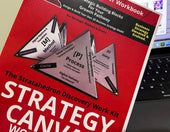
Is Your Strategy Still Just a Pile of Notes and Guesswork?
The Creative Business Strategy Canvas™ is the clarity tool I built after hitting that wall one too many times.It’s one page. Visual. Brutal. Honest.
It shows you your business — as it actually is — so you can build what it’s meant to be.
-

Reinventing Rapid Business Growth With The Strategy SuperModels
Enter The World of Business Strategy SuperModels - Redefine and Reinvent
-

Unlock Business Growth with The Growth Pathway Strategy GPS SuperModel
Unlock Business Growth with The Growth Pathway Strategy GPS SuperModel
-

4 Strategic Steps to Rethink and Reimagine SWOT Analysis for Your Business
Here's How to Reimagine & Customize your SWOT with a Custom SWOT Analysis Worksheet
-

Reimagining & Reinventing Ikigai for Brand Strategy Design Consultants & Strategists
Exploring Brand Strategy Models & Case Studies In Strategy - The Reimagining of the Ikigai Model - The Strategy Super Model Series
-

Exploring Brand Strategy SuperModels & Case Studies in Strategy
-

FlightPath Day 80 of 100: Rhythm Over Hustle - How Founders don’t burn out from work
-

Want to Obtain Better Business Results in 4 Easy Steps? Keep it Simple - Here's A Really Simple Strategy With BIG Impact
-

10 Must-Haves to Master Your Digital Landscape - The Strategy Playbook
Transform Your Business Online With Clearcut Success Strategies In This Strategy Playbook
-

Do You Want to Lose Track of Your ‘Why’ & ‘How’ amongst all of the ‘WTFs’?
You’ll build out your business journey as your “FlightPath” with a close-knit group using the wisdom of your peers for reimagining your perspective, driving your OWN priorities & finding your OWN critical solutions.
-

How to Use Strategy to Improve Brand Awareness - The Brand Strategy Guide
Here's How to Use Strategy to Improve Your Brand Awareness
-

How to Use Strategy to Improve Market Share: What's Really Important?
How Do You Improve Market Share With Strategy?
-

How to Use Strategy to Improve Innovation - Your Innovation Playbook
Understanding the Connection Between Strategy and Innovation
-

How to Use Strategy to Improve Growth - A Definitive Guide
Strategy is an ongoing, dynamic process of Growth
-

10 Rules of a Strategy-Focussed Entrepreneur That Really Matter
What's really important for a strategy-focussed entrepreneur?
-

10 Rules That Really Matter for a Digital-Focussed Enterprise
Here's 10 simple rules to see if you are a digital-focussed business.
-

10 Invaluable Strategic Business Insights for Today’s Highly Competitive Business Environment.
10 invaluable insights for today’s highly competitive business environment using The Art of War
-

The Strategic Planning Success Blueprint: Navigating the Complex World of Planning With The Strategic Planning Checklist
-

The Annual Strategic Planning Panic Season Has Begun! Ditch the Drama, Embrace the Plan: Less Zigging, More Winning!
Strategic Planning Panic Season. Ditch the Drama, Embrace the Plan: Less Zigging, More Winning!
-

Unlock Your Business Brand Secrets: Master Your Brand & Strategy with the Strategystorming Sprint.
Don't let market disruptions steer you off course; take the helm of your business with unwavering confidence by mastering the art of strategic planning. This is your roadmap to not just surviving but thriving in today's volatile business landscape.
-

Can AI make you MORE Creative, Curious, Innovative AND more strategic? Yes or no?
Can AI make you MORE Creative, Curious, Innovative AND more strategic? Yes or no?
What if it could?
-

What You Think You Already May Know About Cognitive Biases...May Be Wrong
-

A Good Strategic Thinker And A BETTER Strategic Thinker - What's The Difference?
Improve your strategic thinking skills and increase your growth potential.
-

Good Strategy vs Bad Strategy. 5 Simple Symptoms To Identify a Really Bad Strategy.
What are the symptoms and signals that can help diagnose a potentially Good Strategy vs an ineffective Bad strategy?
-

Why Your Strategy Must Not Become A To Do List - The Only 5 Strategic Questions You Cannot Exist Without
By taking the time to answer these questions, you can develop a clear understanding of your company's purpose, its big idea, and how you're going to deliver value to your customers. This will help you to stay focused and on track as you build your business.
-

IMPACT: What would you actually do if you had more of it for your business?
Here's how to find and start to build your impact that lasts with digital strategy
-

The Business Top Gun's Playbook: Harnessing Speed of Strategy and Strategic Direction for Navigation for Impact
-

Which 4 Critical Components You Might Be Missing With Your Strategy - Here's How to Make Your Strategy Quicker, Cheaper & Easier
Is Your Strategy Too Hard? Here's How to Make Your Strategy easier to create, implement & execute without breaking a sweat
-

Strategystorming For Your Future: How Can Reinventing Strategy Help Future-Proof Your Business?
The Future May Be Uncertain, But You Don't Need To Be.
Strategystorming is a powerful tool for achieving success and creating a brighter future. By taking control of your destiny and developing effective strategies, you can overcome any obstacle and achieve your goals, no matter how big or small. -

The Power Of The Prompt - The Strategic Look At Artificial Intelligence Alignment & Business
-

Do You Have A Brand Plan? Here's how to Rethink & Stack the odds and start winning with a brand strategy
-

The 5 Key Strategic Factors You Need To Consider to Integrating AI into your Business Now. Here's How To Get Started to Integrate AI Effectively Into Your Business
5 Key Strategic Factors You Need To Consider In Integrating AI into your Business
What would happen if 80% of what you do is commoditized into the same thing that everyone else is doing? If you can no longer compete on price, and everything is now a commodity, what would you do? How can you accelerate your business while everything is accelerating around you?
-

What's Good Strategy or Bad Strategy? Fighting Fires Is No Longer a Startup Badge of Honour. We need to Reinvent How We Think About Strategy For Startups.
What's Good Strategy or Bad Strategy? Fighting Fires Is No Longer a Startup Badge of Honour. We need to Reinvent How We Think About Strategy For Startups and Smart Strategy for Business.
-

Sometimes we can be extremely surprised at how 'strategic' some things are when we compare it to other things. Here's a case in point.
Here's a case in point about how to get epic things done...strategically - without trying that hard.
-

Anyone can start a business, but can you finish one? Can you get yours to the finish line without a strategy?
Anyone can start a business, but it takes a special skill to finish one - strategy builds a business built to last. Are you building your business to last? It’s not a map, not a business model, not a SWOT, not a business plan, not a 1-page Marketing Plan; it's your strategy operating system that defines the difference.
-

Strategy is about change, and we are all architects of change with our strategic thinking
You're In The Business of Change. You Just Don't Know It...Yet.
What does it take to see Change?
How do we adapt change and think more strategically in the solutions that we deliver, and want to deliver?
-

Why being agile doesn’t save a small business? It’s more about your strategic thinking.
The solution to being agile is more about strategy and your strategic thinking ability
-

The Strategystorming Strategy Studio & Shop Launch Event Speakers Summary
It's strategic clarity & #certainty to help you know how to craft a better strategy, and use strategic & tactical tools for profitable growth and a superior ROI by leveraging the power of your brand.
-

The True Power of Reinvention for Business & Rethinking How We Create Remarkable, Winning Strategies - The Strategystorming Strategy Studio & Shop Launch
-

The Truth About What You Should Be Focussing More On in Your Business - Hint: It's 99% invisible
We don't investigate fully how our customers and audience are thinking - we simply gloss over what we think they need. We rarely feel that we 'need' a strategy to enhance what we're doing to drive profitability and how to win - or that it's something that only big companies have to do to please their corporate rulers. And, seldom do we use any systems to create better efficiencies.
-

How Easy Is It To Sacrifice Tomorrow for Today, Without Even Knowing It? Are You A Slave To The Now Because of Your Strategy in Business?
How Easy Is It To Sacrifice Tomorrow for Today, Without Even Knowing It? Are You A Slave To The Now Because of Your Strategy in Business?
-
![#SmartStrategy [Designing Your Strategy For Business] - Strategystorming - The Strategy Studio & Shop for Strategic Thinkers](//strategystorming.co/cdn/shop/articles/smartstrategy-designing-your-strategy-for-business-256943.jpg?v=1693515536&width=170)
#SmartStrategy [Designing Your Strategy For Business]
Strategy is often what you need to do, but also what you don't need to do. It tells you what you see, but also what you don’t see.
-

Is Bigger All There Is in Business? What does the word GROWTH actually mean for GROWING a business?
If only we could grow more, if only we could scale more, if only we could...
-

Is 'Bigger' All There Is? Reinventing & Rethinking Your Business With Strategy
Strategystorming is the new thinking place where we become better strategic thinkers, by applying strategy here and now, sharing what strategy is for business, and how best to realise it and craft it into remarkable experiences.
-

Do You Know The Biggest Reasons Why a Business Fails? It's Not Because of Tech & Creativity
Why does a business fail, and what can you do about it?
Planning & #strategy is not a "to-do list"
It's not even a list of goals you want to achieve, or "what do you want to become in 2022?" (are you a flower? 😂)
-

What will it take for things to return to business as usual?
It's not business as usual anymore. The Easy Strategy Lab is where we find out how to Reinvent & Reimagine & Rethink business.
We are back with a Strategystorming Show on the 4 greatest myths about strategy, change & reinvention - the misconceptions and outdated assumptions that might be killing your efforts or the efforts of your clients today.
-

Strategy Expeditions for Reinvention, Growth & Performance by Strategystorming - The Strategy Mastery Training Course Workshop
What's Creative Intelligence & Strategic Innovation?Learning strategy and implementation with creative tools and storytelling.Unleash the potential within your business or clients to solve your unique business challenges and create dynamic resilient futures.Meet our Creative Intelligence and Strategic Innovation course - Strategy Mastery Training.
It's education, but not as you know it.
It's a workshop Expedition - a Strategy Expedition to get you to your destination... and back, learning, creating, understanding and crafting your ultimate strategy of resilience & success.
![The Entrepreneur Journey is Broken? [Part 1] - Strategystorming - The Strategy Studio & Shop for Strategic Thinkers](http://strategystorming.co/cdn/shop/articles/the-entrepreneur-journey-is-broken-part-1-590109.webp?v=1701206679&width=170)














































![#SmartStrategy [Designing Your Strategy For Business] - Strategystorming - The Strategy Studio & Shop for Strategic Thinkers](http://strategystorming.co/cdn/shop/articles/smartstrategy-designing-your-strategy-for-business-256943.jpg?v=1693515536&width=170)




